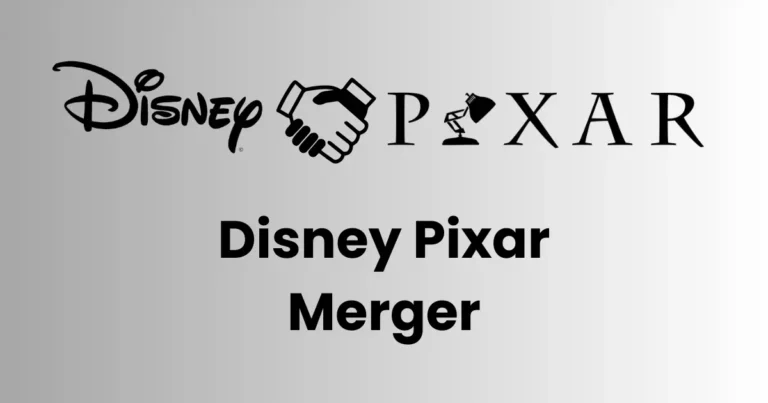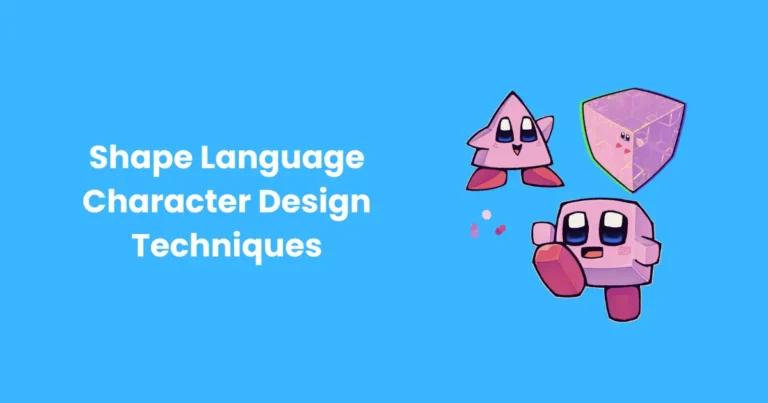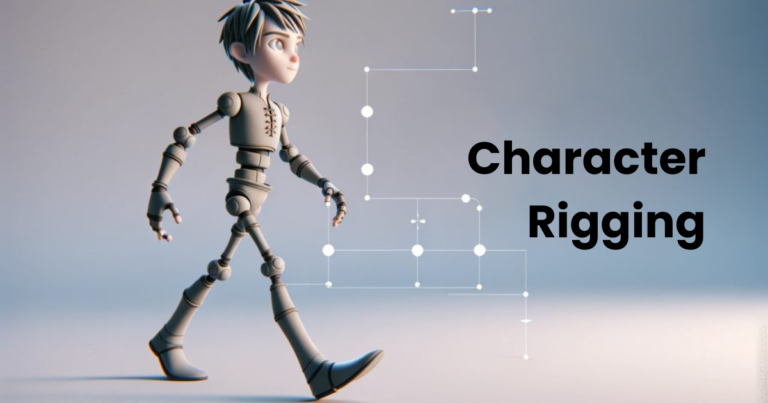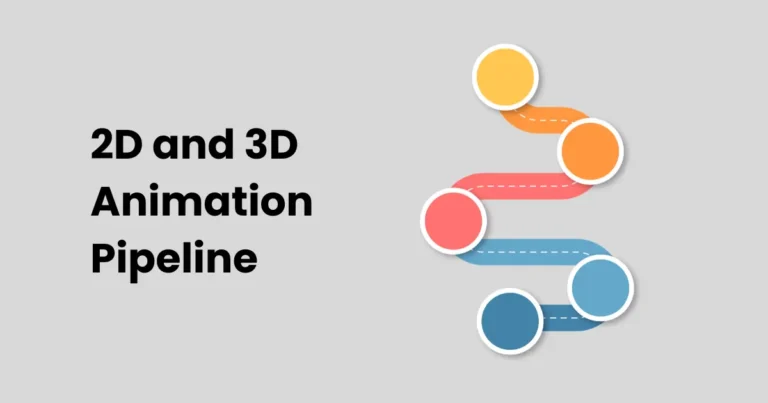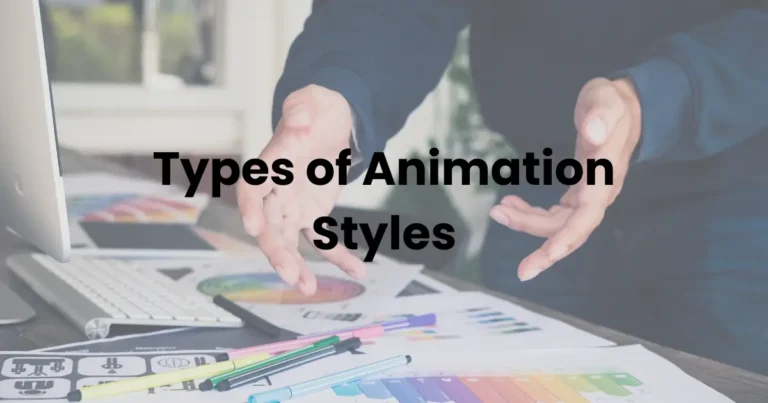Anticipation in Animation: Discover the Principles of Anticipation in 2024
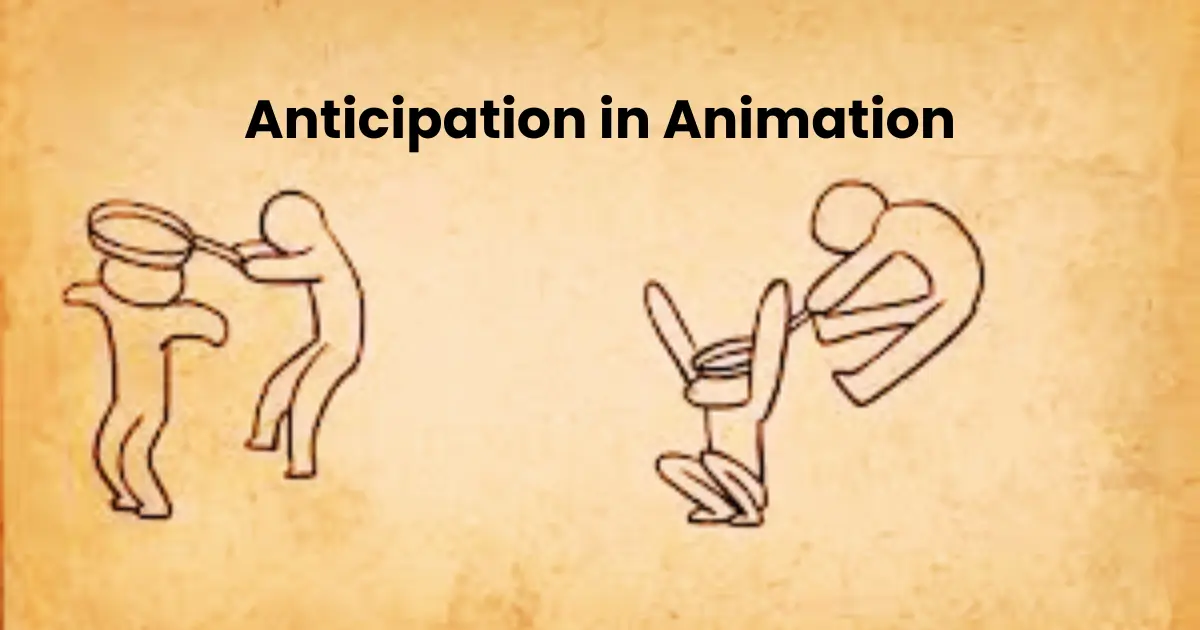
Contents
Anticipation in animation is one of the most crucial principles that bring life and believability to animated sequences. It refers to the preparatory action that occurs before the main action, helping to prepare the audience for what is about to happen. Without anticipation, movements in animation can appear jarring, abrupt, or confusing. Whether it’s a character bending their knees before jumping or winding up an arm before throwing a punch, anticipation in animation allows for a smoother and more engaging viewing experience.
The role of anticipation in Animation goes beyond simple visual appeal. It serves to create a natural flow of action and adds emotional depth, making characters’ movements feel intentional and realistic. By guiding the viewer’s expectations, anticipation also enhances the overall storytelling, ensuring that the audience is emotionally invested and fully immersed in the animated world. This principle is one of the 12 fundamental animation techniques that animators use to communicate actions, emotions, and narrative development in a visually compelling way.
Difference Between Anticipation and Other Animation Techniques
While anticipation in animation is a foundational principle, it is often confused with other animation techniques that serve different purposes. Understanding the distinctions between anticipation in Animation and other principles is crucial for creating smooth, dynamic, and realistic animations. Here’s how anticipation compares to some of the other core animation techniques:

1. Anticipation vs. Follow-Through
- Anticipation occurs before the primary action and sets up what is about to happen. For example, a character might bend their knees before jumping, preparing the audience for the leap.
- Follow-through, on the other hand, happens after the main action. It refers to the residual movement that occurs once the primary action is completed. For instance, after a character jumps, their arms or hair may continue to move as they land or come to a stop.
The main difference lies in the timing: anticipation in Animation is the preparation for an action, while follow-through is the aftermath.
2. Anticipation vs. Timing
- Timing refers to the duration of the action and how it is spaced out. It determines the speed and rhythm of a movement. For example, a fast punch will have fewer frames, while a slow movement will take more time.
- Anticipation, however, isn’t just about timing but involves preparing the audience for what’s to come. The anticipatory motion might take less time, but it plays a critical role in making the main action feel more dynamic and natural.
While timing controls how long or short actions are, anticipation in Animation sets the stage for these actions by indicating their direction and force.
3. Anticipation vs. Squash and Stretch
- Squash and stretch is a technique used to give a sense of weight and flexibility to objects or characters. It exaggerates the deformation of the character or object when it moves, like a ball squashing when it hits the ground and stretching when it bounces.
- Anticipation, in contrast, is not about the object’s deformation but about the preparatory movement that signals the upcoming action. For example, before a character throws a ball, they may wind up their arm, which prepares the viewer for the stretch of the action to come.
Squash and stretch adds a physical quality to the movement, while anticipation in Animation signals the timing and direction.
4. Anticipation vs. Secondary Action
- Secondary action refers to the additional movements that accompany the primary action to enrich the scene. For instance, if a character is jumping, the secondary action might be their clothing or hair moving in response to the jump.
- Anticipation is specifically focused on preparing the audience for a primary action and can involve body movements or even facial expressions that signal what’s coming next.
The key difference is that anticipation in Animation sets up the main action, while secondary action enhances it by adding more depth and realism.
5. Anticipation vs. Exaggeration
- Exaggeration is used to make actions more noticeable, vibrant, and entertaining by increasing the intensity of the movement. For example, a character might stretch excessively before jumping, or an action might be amplified to make it more humorous or dramatic.
- Anticipation, while it can be exaggerated, isn’t focused on making the action larger but on making it clearer and more engaging. It serves the purpose of guiding the viewer’s attention and setting up the action to follow.
While exaggeration amplifies the action for emphasis, anticipation prepares the viewer for it, ensuring that the movement doesn’t come as a surprise.
Examples of Anticipation in Animation
Anticipation in Animation is a crucial animation principle that can be observed in numerous animated sequences across various genres and styles. Here are a few classic examples where anticipation plays a key role in preparing the audience for the main action:

1. Character Jumping
One of the most common and simplest examples of anticipation in Animation is seen when a character is about to jump. Before the jump, the character might bend their knees or crouch down. This preparatory motion signals to the audience that the character is preparing to leap into the air. Without this anticipation, the jump might appear sudden and disconnected, leaving the viewer confused about the action. The crouch or bend in the knees builds tension and makes the jump feel more natural and expected.
2. Punch or Strike
In fight scenes or action sequences, anticipation in Animation is often used to prepare the audience for a punch or strike. Before a character delivers a punch, they might pull their arm back, clenching their fist in preparation. This anticipatory action helps convey the force and intent behind the strike, creating a build-up of energy that the audience can feel. Without this setup, the punch could seem too sudden or weak, losing its impact.
3. Throwing an Object
When an animated character throws an object, anticipation helps set the scene. Before releasing the object, the character may wind up their arm or take a preparatory stance. This movement signals that a throw is coming and gives the audience a clear indication of the direction, speed, and intensity of the action. It also creates a visual rhythm in the animation, making the throw feel more controlled and dynamic.
4. Reaching for an Object
Another common example of anticipation in Animation is when a character is about to reach for an object. Before extending their hand, they might lean forward or shift their body slightly toward the object they wish to grab. This anticipatory movement not only prepares the audience for the reaching action but also gives a sense of intent and focus to the character’s movement. It makes the interaction with the object feel more deliberate and purposeful.
5. Facial Expressions
Anticipation in Animation can also be used in facial expressions to signal a character’s emotional shift before a major action. For example, before a character smiles or laughs, they may first tense up their face or squint their eyes, signaling the upcoming change in expression. This builds emotional tension and allows the audience to read the character’s intentions, making the final expression feel more meaningful and engaging.
6. Throwing a Punch in Slow Motion
In certain animated sequences, such as action-packed or dramatic moments, animators might employ exaggerated anticipation. For instance, when a character is about to deliver a punch in slow motion, the preparation might be highly exaggerated—such as the character winding their arm back so far that it appears almost comically large. This creates suspense and heightens the impact of the punch once it’s delivered, making the anticipation even more noticeable and engaging.
7. A Character Running or Leaping
When a character is about to start running or leap into action, animators often use anticipation to prepare for the swift movement. A character might lean forward, gather their strength, or take a deep breath, signaling that they’re about to sprint or leap. This anticipatory action builds tension, setting up the speed and power of the upcoming movement. The more pronounced the anticipation, the more satisfying the final burst of energy feels.
8. A Character Reacting to a Sound or Event
Anticipation in Animation can also be used in moments when a character is reacting to an external stimulus, such as a loud noise or a surprise. For instance, before reacting to a sudden loud sound, the character may tense up or recoil slightly. This anticipatory action cues the audience to expect a response and sets up the timing for the character’s reaction, which can be exaggerated for comedic or dramatic effect.
9. A Character Preparing to Dance
In dance sequences, anticipation is key to creating fluid and dynamic motion. A dancer may raise their arms or sway slightly before initiating a more significant movement or spin. These preparatory movements allow the audience to anticipate the following action and create a sense of rhythm and flow within the sequence. Anticipation also allows the viewer to appreciate the skill and precision of the dance as the character prepares their body for the main movement.
Techniques for Creating Effective Anticipation in Animation
Creating effective anticipation in animation requires a careful understanding of timing, body language, and emotional cues. By implementing these techniques, animators can enhance the believability and emotional depth of their actions, ensuring that the audience is fully engaged and prepared for the upcoming event. Here are some key techniques to help achieve effective anticipation:
1. Timing and Spacing
The key to good anticipation is the timing of the preparatory action. Anticipation should typically last longer than the main action but should not drag on for too long. For example, if a character is about to jump, the anticipation (like crouching) should take a few frames before the jump happens. The timing of the anticipatory action is essential to building the right amount of tension. The slower the build-up, the more energy and power will be perceived in the final movement.
In terms of spacing, the character’s movements leading up to the main action should gradually increase in size as they prepare. For example, as a character winds up to throw a punch, their arm movement should be more exaggerated and drawn out, with more space between each frame. This helps give the audience a sense of the momentum that will soon be unleashed.
2. Exaggeration of Movement
Exaggeration is a technique often used to make the anticipation more visually obvious and dynamic. By exaggerating the preparatory movements, animators can emphasize the buildup of energy or force. For instance, before a character performs a high jump, they may bend their knees deeper than what would be realistic, creating a more dramatic anticipation of the jump.
This exaggerated movement not only clarifies the upcoming action but also adds flair and personality to the character. In comedies, this could be taken further for humorous effect, like a character winding up so dramatically that it becomes almost comical before delivering a punch or action.
3. Anticipation in Facial Expressions
Facial expressions are essential in anticipation as they provide emotional cues to the audience. Before a character performs a major action, their face can show signs of concentration, excitement, or focus. For example, if a character is about to deliver a serious punch, they might tighten their jaw or furrow their brow in preparation. These facial expressions signal to the audience what the character is about to do, enhancing the emotional engagement and making the upcoming action more satisfying.
This technique is especially important in character-driven animations, where the emotional build-up is just as crucial as the physical movement. A change in expression, such as a quick narrowing of the eyes before a leap or a sudden smile before a comedic moment, can significantly elevate the anticipation.
4. Use of Body Language and Stance
A character’s posture and stance play an important role in anticipation. Before performing a big movement, such as jumping, running, or striking, the character may shift their weight, take a deep breath, or adopt a specific stance. For example, before a character punches, they may shift their weight backward slightly, plant their feet, and brace themselves. This anticipatory stance signals that an action is coming and prepares the viewer to expect the motion.
The choice of stance or body language can also convey a lot about the character’s mood or personality. A tense stance might show a character gearing up for a powerful action, while a more relaxed pose might suggest a more effortless or laid-back movement.
5. The Use of Visual Cues or Objects
Sometimes, anticipation can be represented through visual elements in the scene. For instance, before a character jumps, animators might focus on their feet or the ground, with the camera angle shifting slightly to emphasize the upcoming motion. This helps build suspense and directs the viewer’s attention to the most important part of the scene.
Similarly, objects or props can provide clues about the impending action. If a character is about to throw a ball, focusing on their hand as they grip the ball and wind up their arm can visually cue the audience to the action ahead. These small visual cues act as signposts for what’s coming, helping the audience prepare without giving away too much detail.
6. Anticipation in Slow Motion
In action-heavy animations, slow motion can be used effectively to create a more detailed and dramatic anticipation phase. Slowing down the preparatory movements before the big action—like a character taking a slow, exaggerated wind-up for a punch—gives the viewer more time to anticipate and feel the build-up of energy. The anticipation becomes more pronounced, making the main action that follows even more impactful.
This technique is especially useful in more intense, high-stakes moments, where the audience’s focus needs to be drawn toward the impending event, whether it’s a dramatic punch, jump, or fight sequence.
7. Clear Directional Movement
Anticipation should clearly indicate the direction of the forthcoming action. This can be achieved through the body’s orientation, the positioning of limbs, and the angle of the character’s gaze. For example, before a character punches, their arm might draw back in a clear direction, signaling the trajectory and force of the punch. Similarly, before a character makes a quick movement, they might lean toward the direction of motion, guiding the audience’s focus.
By establishing the direction of the action, anticipation helps the audience predict the outcome of the motion, adding to the excitement and impact of the action.
Anticipation in Different Animation Styles
Anticipation is a fundamental principle in animation, but how it’s applied can vary significantly depending on the style and tone of the animation. Different animation techniques require different approaches to anticipation, influencing how the audience perceives the action and interacts with the story. Let’s explore how anticipation is used in various animation styles, ranging from traditional hand-drawn animation to modern 3D animation and stop-motion.

1. Traditional 2D Animation
In traditional 2D animation, where each frame is hand-drawn, anticipation is often used in an exaggerated and stylized manner. Since traditional animation tends to lean on fluid, exaggerated movements, anticipation is generally highly noticeable and drawn out. Characters might bend their knees far before jumping, or they might dramatically wind up their arm before throwing a punch. This exaggeration adds to the charm and impact of the action.
For example, in classic Disney animation like Snow White or Cinderella, characters often take a few exaggerated steps back or gather momentum before performing a jump or movement. The anticipation is deliberately drawn out to emphasize the emotion and physical effort of the character, ensuring that the upcoming action has both rhythm and tension. The pacing of the anticipation creates a sense of flow that matches the energetic and expressive nature of 2D animation.
2. 3D Animation
In 3D animation, anticipation follows similar principles but is rendered with more realistic physics and subtlety. 3D animation allows for a greater degree of detail in body mechanics and physical motion, which means that anticipation can be more natural and nuanced. For example, in a 3D animated movie like Toy Story or Frozen, the character may subtly shift their weight or gradually ease into a movement to show their preparation for a bigger action, rather than using extreme exaggeration.
The use of anticipation in 3D animation also involves careful attention to how the character’s body reacts to gravity, momentum, and inertia. A character preparing to jump may slightly bend their knees and lower their center of gravity in a more controlled way compared to traditional 2D. These subtler movements reflect the modern expectation for more lifelike, relatable animation while still adhering to the principles of anticipation.
3. Stop-Motion Animation
In stop-motion animation, where physical models or puppets are photographed frame-by-frame, anticipation can take on a slightly different form. Since stop-motion is more labor-intensive and relies on physically moving models, the anticipation in stop-motion is often more methodical and deliberate. Animators must plan every single frame to ensure the build-up to the action feels natural and fluid.
In films like The Nightmare Before Christmas or Coraline, the anticipation is often paired with exaggerated body movements and sometimes prop manipulation, creating a sense of impending action that is more tactile. Characters may visibly lean or reposition themselves before a key action, and props may be repositioned to visually show the character’s movement preparation. This technique, though still exaggerated, tends to have a more “real-world” tactile feeling because of the nature of the stop-motion medium.
4. Anime (Japanese Animation)
In anime, anticipation can be utilized in ways that emphasize emotional build-up and dramatic tension. The anticipation is often quick and stylized, especially in action scenes. In anime, characters might have a sudden shift in their stance or face that signals a dramatic action is coming, often accompanied by emotional buildup. For instance, characters often show visible signs of stress, like sweating or twitching eyes, in anticipation of a battle or action.
In series like Naruto or Dragon Ball Z, anticipation is often coupled with energy buildup and visual effects, like glowing outlines or swirling energy around characters before they perform a big move. These visual elements are a distinct feature of anime, helping to create dramatic tension and increasing the emotional intensity of the action.
5. Claymation
Claymation animation, a form of stop-motion, is often marked by its unique and flexible use of clay figures. Anticipation in Claymation is heavily influenced by the manipulation of clay figures’ forms, which allows for exaggerated, rubbery movements. Much like traditional stop-motion, anticipation in Claymation tends to be very exaggerated, but the added flexibility of clay gives animators more room for bending, stretching, and reshaping the figures, enhancing the anticipation.
In films like Wallace & Gromit or Chicken Run, characters may dramatically “squash” or “stretch” before initiating a movement, emphasizing the tension that leads to an action. The exaggerated nature of Claymation allows for a playful approach to anticipation, where the build-up is almost as entertaining as the action itself.
6. Motion Graphics and 2D Vector Animation
In motion graphics or 2D vector animation, anticipation is usually more minimalist, focusing on smooth transitions and fast-paced motion. The preparation for the main action might be subtle, with more emphasis on timing and less on exaggeration. This type of animation is commonly seen in commercials, title sequences, and explainer videos.
In motion graphics, anticipation is often paired with visual elements like lines or shapes that move in preparation for a larger transformation. For instance, before an object changes shape or an icon animates into a different position, small elements might move, rotate, or scale slightly, signaling to the viewer that something is about to happen. This anticipatory motion is sleek and modern, maintaining a clear visual flow that is visually appealing yet simple.
7. Cartoon Animation
In cartoon animation, particularly in comedic or slapstick cartoons, anticipation tends to be exaggerated and stylized, often for humor or dramatic effect. For example, before a character performs an exaggerated action like a big jump or a punch, they might take several over-the-top steps backward or move their body in a comically slow and deliberate manner.
Classic examples include animated shows like Looney Tunes or Tom and Jerry, where anticipation is often used for comedic timing. A character may stretch their arm in a wildly exaggerated manner or pull back dramatically, creating a build-up that is both humorous and entertaining.
How Anticipation Improves Storytelling in Animation
Anticipation plays a crucial role in storytelling in animation, as it not only enhances the visual flow but also deepens the emotional connection between the audience and the characters. By providing a visual cue or signaling upcoming events, anticipation allows the audience to predict what’s about to happen, which heightens the emotional stakes and provides greater context for the following actions. This creates a more engaging viewing experience, where the audience feels involved in the unfolding narrative.

1. Builds Tension and Suspense
One of the most significant ways anticipation improves storytelling in animation is by building tension. When characters prepare for an action, whether it’s a dramatic punch, jump, or dramatic reveal, the anticipation gives the audience a sense of what’s to come. This buildup of energy or momentum creates suspense, keeping the viewer on the edge of their seat. For example, in an action-packed scene, a character might pull back their fist before a fight, allowing the audience to feel the weight of the upcoming battle. This tension draws the audience in emotionally, making them eager to see the action unfold.
In animated films like The Incredibles, the use of anticipation before key moments, like superhero battles or escape sequences, enhances the emotional impact of the story. As the character prepares for the impending action, the audience can sense the stakes and get excited for the outcome, making the entire scene more engaging.
2. Helps Communicate Character Intentions and Emotions
Anticipation is an effective way to communicate a character’s emotions and intentions to the audience. Through anticipatory movements, animators can signal the character’s mindset or emotional state before the main action. For example, a character about to jump may crouch low and tense their muscles, conveying their determination and readiness. Alternatively, a character might glance nervously around before taking a bold step, which communicates hesitation or uncertainty.
In Pixar’s Finding Nemo, the characters’ preparation for action, whether it’s swimming quickly or hiding, speaks volumes about their personalities and emotional states. This enhances the storytelling by providing the audience with more context, making characters feel more dynamic and multidimensional. In this way, anticipation helps to not only propel the narrative but also deepen character development.
3. Creates Rhythm and Flow in the Narrative
Anticipation also contributes to the rhythm and flow of the narrative. By establishing a visual cue or movement before a key action, animators create a pattern or cycle in the pacing of the animation. This pattern helps guide the audience’s attention and prepares them for the upcoming beat in the story. Well-executed anticipation provides a sense of timing and balance, allowing the story to unfold at a pace that feels natural and satisfying.
Consider the use of anticipation in films like Zootopia, where characters build momentum before chasing or solving a mystery. These anticipatory moments allow the story to flow smoothly from one action to the next, maintaining a strong sense of pacing and ensuring that the animation doesn’t feel rushed or overly drawn out.
4. Strengthens the Impact of the Action
Without anticipation, an action might feel sudden or disconnected from the story. By introducing the audience to what is coming, anticipation makes the subsequent action feel more impactful. The time spent on preparation increases the payoff, making the action more satisfying. This principle is often used in comedic animations, where the build-up creates a more exaggerated and surprising punchline, but it can also be used in dramatic sequences for an emotional payoff.
In slapstick animation like Tom and Jerry, the anticipation of an incoming trap or a sneaky action is key to the comedic timing, making the moment of impact more dramatic and humorous. By allowing the audience to prepare for the humor, animators make the payoff more exaggerated and enjoyable, enhancing the overall comedic effect.
5. Enhances Visual Appeal and Engagement
From a visual perspective, anticipation allows for greater exaggeration, making the movements and actions more expressive. This visual flair can captivate the audience and make the story more entertaining. In many ways, the anticipation itself becomes a spectacle, drawing attention to the action before it even happens. This is especially true in cartoon or fantasy animation, where visual exaggeration is often used for comedic or dramatic effect.
In animated series like Looney Tunes, the exaggerated preparations before an action enhance the visual spectacle, making the animation feel more playful and exciting. The anticipation doesn’t just support the action—it becomes part of the fun, helping create memorable moments that engage the audience in a more visual and visceral way.
Conclusion
Anticipation in animation is a fundamental principle that greatly enhances the visual storytelling and emotional impact of a scene. By providing a buildup before a significant action, it helps the audience engage with the story and characters on a deeper level, creating tension, suspense, and excitement. Properly executed anticipation allows animators to convey emotions, intentions, and momentum, making every action feel more satisfying and impactful. However, mastering anticipation involves balancing exaggeration with realism, perfecting timing, and ensuring the emotional resonance aligns with the overall tone of the animation.
Incorporating anticipation effectively requires practice, patience, and attention to detail. It’s not just about preparing the audience for what’s coming; it’s about creating a seamless and engaging experience that enhances the rhythm of the narrative. Whether in fast-paced action scenes or subtle character interactions, anticipation remains one of the most powerful tools in an animator’s arsenal. With careful planning and execution, animators can create more dynamic, memorable, and emotionally engaging animations that resonate with viewers.

